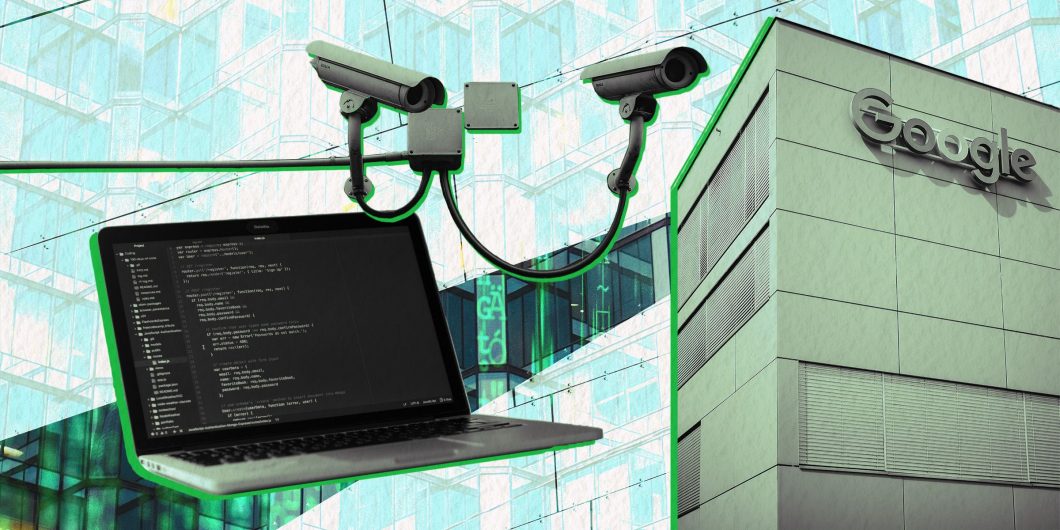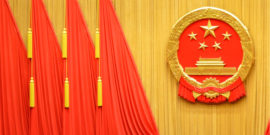Now Is the Time for Action
“A lot of people will say, ‘Well, hold on a second, partisanship and division, we’ve had that many times throughout history,” said Tristan Harris, the filmmaker who produced the eye-opening 2020 documentary, The Social Dilemma, which detailed the negative impact of social media on society. “Also, has partisanship in television and radio preexisted social media? Yes. Have we ever wired up the most powerful artificial intelligence in the world, pointed it at your brainstem to show you the most enraging content on a daily basis, and the longer you scroll, the angrier you get? We’ve never done that before!”
The impact of Big Tech, specifically social media, on society has become a hot-button topic of late. Ever since the unlikely election of Donald J. Trump to the presidency in 2016, both political parties in America—for different reasons—have made attacking social media a new tradition in American politics. Big Tech is not just another industry struggling to overcome unfair government regulation. The products that are being produced by Big Tech and used by most people are unique, with real, negative, and lasting health impacts.
Unlike previous technological inventions, such as radio, television, or the telephone, social media has changed the way in which Americans talk to one another. Communication has been, in Harris’ estimation, “colonized and privatized” by social media firms. Over the last decade, the various social media firms have enhanced their product design with the aim of maximizing their profits. Yet, there are some products that, if not regulated by the government, will do long-lasting damage to the country and our people. Social media specifically, and Big Tech more generally, represent just the kind of industry that requires regulation. It’s a type of regulation that is anathema to many—notably those who describe themselves as “libertarian.”
An Algorithm from Hell
Social media uses powerful algorithms to sort and program its vast number of users globally. The use of these algorithms paired with increasingly sophisticated programming, makes social media platforms far different from most other products available to the public. These programs are designed to target and antagonize, preying upon the tribal nature of human beings and luring all of its users into an “us vs. them” mentality. Those who dominate this new field of socialization are what Harris accurately derides as “division entrepreneurs.”
Once you are separated into your digital tribe by the algorithm, the algorithm then entices its users to enhance the social media platform’s ad revenue by promoting extreme content that activates certain parts of the human brain and triggers visceral responses. Over time, the brain becomes accustomed to these electronic provocations and, as many scientists argue today, the user becomes addicted to the frothy rage. This is social programming on a level that Orwell himself could not have fully envisioned. The rage, in turn, begets more rancor among users on the platform and creates “viral” moments that are intended to normalize the extreme, unhinged behavior and views.
Pew Research Center has determined that roughly 69 percent of adults and a staggering 81 percent of young people use social media daily in the United States. And it is that last figure that should concern parents and policymakers alike. Studies of teenagers who use social media heavily (in 2019, 40 percent of ages 18-22 and 37 percent of ages 23-38 in 2019 self-reported that they believe they are addicted to social media) have been found to struggle with a variety of mental health and physical ailments as a direct result of their use. Meanwhile, young teenage girls, according to some studies, have suicidal ideations as a result of negative body images of themselves being exacerbated by the algorithm that governs social media platforms.
Only government regulation can be used to enforce standards and norms that will protect Americans from what has been proven to be a toxic product.
Scientists studying the impacts of the various social media platforms have determined that the more prolonged exposure to these apps that one has, the more one’s brain changes. In one study, researchers determined that prolonged social media use “shrinks parts of the brain associated with maintaining concentration.” According to a 2018 study in the United Kingdom, “The [social media platforms] are designed to be addictive and are associated with anxiety, depression, and even physical ailments.” Human beings are creatures that operate on incentives. If certain behaviors are rewarded, we tend to continue engaging in those behaviors. Dopamine, the chemical in the brain that allows you to feel pleasure—and is associated with food, sex, for example—is released which serves to positively reinforce your desire to replicate this behavior.
There are other products that are similarly addictive. Cigarettes come to mind. So, too, does alcohol. Or narcotics. What do all these things have in common? They are all either heavily regulated or are, in the case of certain narcotics, banned outright. Social media damages the entire society which has become heavily reliant on these platforms as a means of social interaction. Social media has proven toxic to our national discourse; it has an undue amount of influence over our political opinions as well.
The Right to Silence You
Social media firms are perhaps the most dangerous insofar as they regulate political discourse. Today, most people do not get their news from the television or radio. Instead, they get news from their “newsfeed” on whichever social media platform they prefer. The stories in that newsfeed are curated by increasingly prescient algorithms that are intended to evoke an emotional, dopamine-filled response from the user rather than to inform someone about an event. Social media is ubiquitous. It links us together in a digital community that far surpasses the way that email, telephones, or any other mode of communication.
More dangerously, the bulk of these social media firms are led by dyed-in-the-wool Leftists who are naturally inimical to center-Right opinions. This reality creates a grave imbalance in our political discourse. Leaving regulation of these powerful social media platforms in the hands of the corporate stakeholders whose entire business model is predicated on making divisive and harmful algorithms all the more dangerous, is akin to letting the fox guard the henhouse. Only government regulation can be used to enforce standards and norms that will protect Americans from what has been proven to be a toxic product. Beyond the potential toxicity of the product, the fact that these hugely influential platforms are overwhelmingly Leftist ensures that entire elections and policy debates could be swayed—unfairly—by censorship.
The censorship these firms are engaged in transcends the political realm as well. During the COVID-19 pandemic that gripped the world in 2020, social media platforms exerted control over their users’ free speech with wanton abandon. Anyone—not only influencers with massive followings—who typed a comment questioning the still-unknown origins of the disease that ran counter to the official narrative, or who dared to utter a skeptical word about the efficacy of mRNA-based vaccines, was systematically canceled by social media companies. While some reading this may shrug and say that these social media firms are private businesses and therefore allowed to regulate content, the fact is that these same firms are given special regulatory exemptions by the federal government because social media firms tell the government that they are not publishers. Yet, the fact that these firms regulate content—and that they have been proven to regulate that content with political biases—implies that they are, in fact, publishers and should be regulated as such. These companies cannot have it both ways, especially when the stakes are so high.
Furthermore, Big Tech is using its vast power to squelch dissent that may impact its bottom line. Consider this: Mark Zuckerberg’s Facebook funded British-based pharmaceutical company GlaxoSmithKline’s COVID-19 cure to the tune of $100 million. While the search for a cure to this pernicious plague is admirable, the fact that Zuckerberg’s Facebook was censoring anyone who appeared skeptical of the new vaccines should give people pause. Users who were deleted or silenced unfairly had no recourse. Scores of people were unable to share information and ideas with each other during a time when almost everyone was locked down, and digital communication was the best available form of socialization. Information that could have been shared about vaccines was manipulated by companies that had a financial interest in downplaying potential risks of experimental vaccines.
What Is to Be Done?
The first thing that must be done is for Congress to impose regulations upon social media firms. Barriers to entry should be employed. Then, Congress should follow through on previous threats to remove some of the protections that Section 230 of the Communications Decency Act provides social media companies. Removing Section 230 protections would be the first necessary step toward forcing these firms to respect the First Amendment rights of their users in America. Beyond that, because social media has become the dominant form of socialization in America today, it might be time to regulate these companies in the same manner that we regulate power companies or telephone companies. While this will create certain inefficiencies from a business standpoint, imposing such regulations upon these companies would force them to treat their vast number of users with greater equity.
The digital domain is unregulated, and the technological mediums are designed to maximize division among its users, with profoundly negative health impacts on the general public.
The negative health effects alone warrant greater government regulation of these companies and the dangerous algorithms they “inject directly into the brainstem[s]” of their users, in Harris’ words. It’s very telling that ByteDance, the Chinese company that created the world’s most popular social media platform to date, TikTok, sells two versions of their app. One version is tightly regulated and allows its teenage and young adult users limited access to features of the program. It relegates its young users to educational materials, as well as patriotic content. Meanwhile, the other version that is sold to the United States is the version that allows its users of all ages to have total access to any content on the app—including grossly inappropriate things. Plus, TikTok has been proven to be one of the most unhealthy social media platforms available to Americans today.
What’s more, TikTok’s popularity, combined with the fact that it is a Chinese product poses potential national security risks. A Pentagon investigation revealed that the private data of US military personnel who use the application was sent back to servers in China—where the People’s Liberation Army (PLA) and the ruling Chinese Communist Party (CCP) can gain access to it. Grave warnings about the security risks this program posed to US military personnel were quickly sent out to all members of the United States Armed Forces. Yet, the app remains widely available in America. Although, in the waning months of 2022, multiple states have either announced their intention to ban the TikTok app. Virginia has already banned TikTok from state government computers. The US military is seeking to curb TikTok usage for its members on government devices as well because of these national security concerns.
Judging from the health risks and the national security threat posed to the country by this particular social media app, one would think that this program would be far more regulated by the US government than it is. Sadly, it remains widely available to the public. Shortly after China initiated an illegal attack on Indian troops patrolling the Sino-Indian border in 2020, the Indian government recognized TikTok for the security threat that it is and completely banned the product in their country. Since that time, India has reported no deleterious impacts. In essence, India’s ban on the program did little to harm the freedom of their people and may have enhanced both their national security as well as the mental health of their people from an inherently harmful product, like ByteDance’s TikTok.
The United States finds itself living in a new age that its government and people are completely unprepared for. It is an age in which we are physically isolated from one another yet increasingly connected across a digital domain. Yet, that digital domain is unregulated, and the technological mediums are designed to maximize division among its users, with profoundly negative health impacts on the general public. That’s to say nothing of the national security implications of using apps that are created by rival nations like China.
It’s time to regulate Big Tech.


